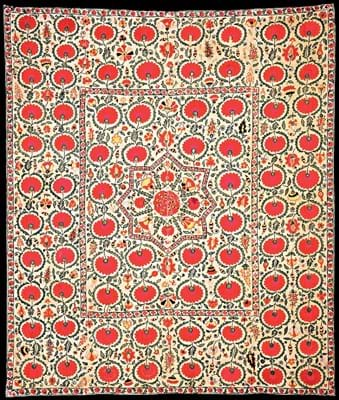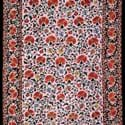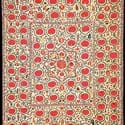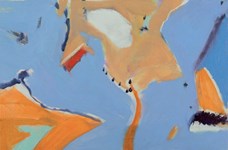These dowry weavings were created by brides’ families. Traditionally the grandmother started the piece, drawing a design in ink, and the bride would work on embroidering the different panels with help from female family members.
The groom was presented with the gift on his wedding day as a symbol of his future wife’s wealth and domestic skills.
Decorative motifs symbolising luck, health, long life and fertility as well as dense foliage in crimson and maroon typically adorn these intricate textiles, which are named for the Farsi word for ‘needle’.
New embroideries were made for each wedding and fashions changed by generations. Most sought-after today are those created between the mid-1700s and 1875.
Old and new
Eight fabrics from the 19th century are included at the Afridi exhibition, which runs from June 7-July 5. They are shown alongside the gallery’s range of 20th century furniture and design objects.
Among them is Ascending Trailing Stems from Kermina, Bukhara region (present-day Uzbekistan) made during the first half of the 19th century. Measuring 5ft x 7ft 5in (1.52 x 2.2m), the basma technique silk embroidery is completed on a cotton foundation.
Wooden carvings and Japanese glass bottles are also offered at the Chelsea gallery.


















